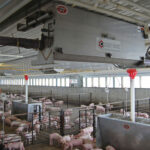Purpose-Built Power
In most instances, compromise is a good thing. That’s not necessarily true, however, when you are talking about agricultural engines. According to Matt Rushing, AGCO director of product management for global engines and global electronics, nearly every company but AGCO...
Purpose-Built Power
In most instances, compromise is a good thing. That’s not necessarily true, however, when you are talking about agricultural engines. According to Matt Rushing, AGCO director of product management for global engines and global electronics, nearly every company but AGCO...In most instances, compromise is a good thing. That’s not necessarily true, however, when you are talking about agricultural engines. According to Matt Rushing, AGCO director of product management for global engines and global electronics, nearly every company but AGCO shares most of their engines with other applications. Consequently, trade-offs on performance and price are generally the result.

The AGCO Power 9.8-liter, 7-cylinder in-line diesel engine used in the Massey Ferguson 9500 Series combines as a good example of an engine built specifically for ag.
“That’s not the case with the AGCO POWER engines Massey Ferguson® uses to power the majority of its tractors and harvest equipment,” says Rushing. “We purposely build our engines for particular agricultural products.”
In contrast, Rushing says many of Massey Ferguson’s competitors are forced to build a line of engines for multiple applications—from excavators and marine usage to trucks and forestry machines. “They really have to design their engine families with those things in mind. When you do that, you’re going to have to compromise somewhere.”
As a result, he continues, “one group of customers is often penalized in terms of cost, size or performance, because the engine has to be built a certain way for another specific group of customers … whether that involves using a certain type of cooler, a certain SCR dosing system or even special internal components.” However, because AGCO POWER engines are designed and built for agricultural applications, the machines can often be built smaller to allow for greater ease of handling or provide greater visibility than if an off-the-shelf engine were fitted under the hood.
As one example, Rushing points to the AGCO POWER 9.8-liter, 7-cylinder in-line diesel engine used in the Massey Ferguson 9500 Series combines. “It’s basically one cylinder longer than the 8.4-liter engine we use in the 8600 Series tractors, so that gives us and our customers a lot more parts commonality for lower maintenance costs. Yet, the in-line design gives us as much torque and power as we had with the [12.5-litre] Cat, while leaving space for all the turbos, after-treatment components and in-line cooling systems that are required to meet current emissions standards.”



